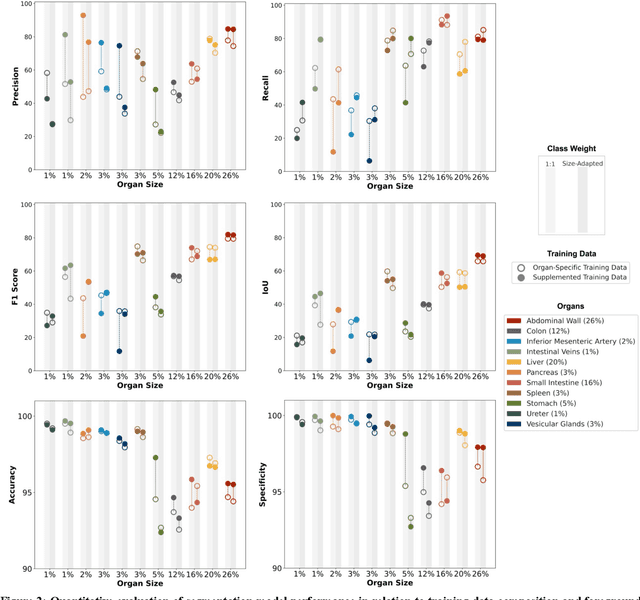Strategies to Improve Real-World Applicability of Laparoscopic Anatomy Segmentation Models
Paper and Code
Mar 25, 2024



Accurate identification and localization of anatomical structures of varying size and appearance in laparoscopic imaging are necessary to leverage the potential of computer vision techniques for surgical decision support. Segmentation performance of such models is traditionally reported using metrics of overlap such as IoU. However, imbalanced and unrealistic representation of classes in the training data and suboptimal selection of reported metrics have the potential to skew nominal segmentation performance and thereby ultimately limit clinical translation. In this work, we systematically analyze the impact of class characteristics (i.e., organ size differences), training and test data composition (i.e., representation of positive and negative examples), and modeling parameters (i.e., foreground-to-background class weight) on eight segmentation metrics: accuracy, precision, recall, IoU, F1 score, specificity, Hausdorff Distance, and Average Symmetric Surface Distance. Based on our findings, we propose two simple yet effective strategies to improve real-world applicability of image segmentation models in laparoscopic surgical data: (1) inclusion of negative examples in the training process and (2) adaptation of foreground-background weights in segmentation models to maximize model performance with respect to specific metrics of interest, depending on the clinical use case.
 Add to Chrome
Add to Chrome Add to Firefox
Add to Firefox Add to Edge
Add to Edge